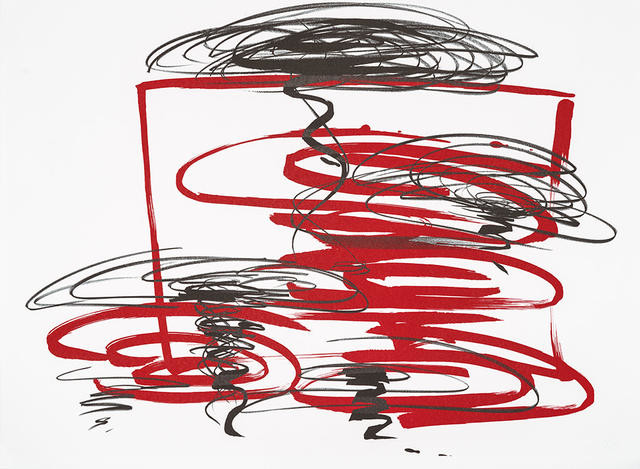Peter Roche
Aotearoa New Zealand, b.1957, d.2020
Untitled
- 2011
- Lithograph
- Gifted by Muka Studio, 2011
- 563 x 762mm
- 2013/062
Tags: abstraction, red (color)
It is with sadness that Christchurch Art Gallery Te Puna o Waiwhetū acknowledges the passing of Auckland artist Peter Roche (1957–2020). After graduating from Elam School of Fine Arts in the late-1970s, Roche became known for his impactful performances undertaken in collaboration with Linda Buis. By the 1990s, he had developed his practice to produce vibrant light-based sculptural installations and performative drawings. Across his works, there is a sense of dynamic motion; a kinetic energy that reflects the connection he saw between his art and life. Underpinning his work were themes relating to machines and technology, concerns about surveillance and the role of state, and the boundaries of public and private worlds. Roche was selected for several international festivals, including the Australian Sculpture Triennial (Melbourne, 1981), the Paris Bienniale (1982) and the first Gwangju Biennale (1995) in Korea. He exhibited widely throughout his career and is represented in collections across Aotearoa, including this one. I will always remember the performance by Roche that I experienced at ‘Symposium 2000: An International Conference on Post-Object Art in New Zealand’. After signing a waiver at the door we were ushered into a gallery with the artist, and a chainsaw. When he started the machine, the roar was exhilarating and I still recall the pungency of the petrol fumes. There was a metal chain attached to the chainsaw handle and Roche slowly swung it into action until it was hurtling around him in a circle, his body the only anchor point. It was terrifying and the audience quickly retracted to the edges of the space. I remember shielding myself behind the crowd, thinking that if it slipped from his grasp, someone would lose a leg. With its dramatic red circles and the swift, firm pressure of the artist’s hand, this untitled lithograph from 2011 is for me a representation of the centrifugal force in that performance. It asserts the necessity to take risks in art and in life – to live life to the fullest, as Roche did.
—Melanie Oliver, Curator, August 2020
